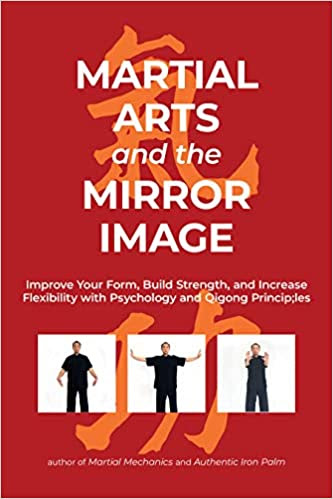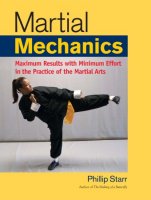by Phillip Starr
Now, there's certainly nothing wrong with training to polish and perfect technique. BUT...of even greater importance is the development of what makes them actually work. I remember my teacher handing me a very sharp broadsword while he picked up a wooden replica. “If we were to actually fight with these weapons, which one of us would win?”, he asked.
That was clearly a no-brainer, even for a young teenager. “You would, sifu”, I replied.
We're not really gonna do this, are we?
“Yes”, he answered. “Why is that?”
Another no-brainer. “Because you know how to use this weapons much better than I do.”
Heck, he could have beaten me with a twig or even just a single chopstick. As time went on, I came to realize that his superiority wasn't because of his”weapon”...it was because he knew how to win WITH or WITHOUT a weapon. The condition of a given weapon (whether it was a chopstick, a sharp or dull broadsword, or whatever) didn't matter. He knew how to win...how to defeat me with a sword, stick, fist, or foot.
He'd mastered what I call the “Three Jewels of Combat”...Distance, Timing, and Rhythm. I've written extensively on these subjects and they're discussed in detail in my book, MARTIAL MANEUVERS.” So I'm not going to repeat myself yet again here. You'll have to go back and read the material on your own, AND THEN PRACTICE to refine and perfect them. For the rest of your life.
Currently, there's an interesting new combative sport called “light saber fencing” and it has attracted a very large following. There are numerous videos of competitions wherein players fight with what amount to expensive plastic swords, which can be used with one or both hands. For the most part, the players are not practitioners of any particular martial art; they're civilians” as it were, while some are actual fencers, kendoists, and so on. And it looks like it.
If you watch children playing at sword-fighting, you'll quickly notice a distinct lack of any real technique, and the two combatants are focused on “fighting the opponent's sword” rather than him. Of course, it's just children playing, but most adults who engage in this new sport are doing the same thing.
In swordsmanship, many people regard the Japanese katana as the best sword ever used for combat. Others disagree and point to Chinese or European sword, touting their reasons for their belief. And most of the time, they're wrong. It isn't about the quality of the sword that makes the difference, nor is the answer to be found in the technique(s) of a given weapon. The secret lies in the mastery of the Three Jewels.
The reason Japanese swordsmanship is so effective is because of their ceaseless training with the Three Jewels. Modern kendo bears scant resemblance to the kendo that was practiced into the 1950's; there is much less emphasis on the Three Jewels, and more emphasis on technique for scoring points and winning a match. In the old days (wherein kendo allowed for numerous grappling techniques), the focus was on how one would actually engage an opponent in a life or death struggle. The Three Jewels were empjasized very heavily.
In contemporary gong-fu/wushu, emphasis is on technique and “posturing” (posing and looking very beautiful). The truth is that even the best of such competitors would enjoy very short life-spans in actual combat, even with one whose technique wasn't nearly as pretty. When two swordsmen of days long past met to do battle, they faced their enemy in a relaxed but mentally and spiritually intense condition. There was nno unnecessary movement, no charging in with swords flailing...they remained still, focused entirely on the enemy and “feeling” his mind and spirit, looking for even a slight flaw (an opening). If one's spirit lagged or focus became distracted for even a second, the fight would be over.
This same approach is to be applied to hand-to-hand fighting. Without it, technique is pointless.
























No comments:
Post a Comment